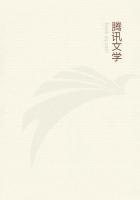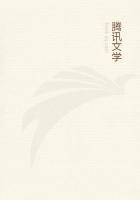(Geum Canadense; G.album of Gray) Rose family Flowers - White or pale greenish yellow, about 1/2 in.across, loosely scattered in small clusters on slender peduncles.Calyx persistent, 5-cleft, with little bracts between the reflexed divisions; 5 petals, equaling or shorter than the sepals; stamens and carpels numerous, the latter collected on a short, bristly-hairy receptacle; styles smooth below, hairy above, jointed.Stem: 2 1/2 ft.high or less, slender, branching above.
Leaves: Seated on stem or short petioled, of 3 to 5 divisions, or lobed, toothed small stipules; also irregularly divided large root-leaves on long petioles, 3-foliate, usually the terminal leaflet large, broadly ovate side leaflets much smaller, all more or less lobed and toothed.Fruit: A ball of achenes, each ending in an elongated, hooked style.
Preferred Habitat - Woodland borders, shady thickets and roadsides.
Flowering Season - June-September.
Distribution - Nova Scotia to Georgia, west to the Mississippi or beyond.
Small bees and flies attracted to sheltered, shady places by these loosely scattered flowers at the ends of zig-zagged stems, pay for the nectar they sip from the disk where the stamens are inserted, by carrying some of the pollen lunch on their heads from the older to the younger flowers, which mature stigmas first.But saucy bumblebees, undutiful pilferers from the purple avens, rarely visit blossoms so inconspicuous.Insects failing these, they are well adapted to pollenize themselves.Most of us are all too familiar with the seeds, clinging by barbed styles to any garment passing their way, in the hope that their stolen ride will eventually land them in good colonizing ground.Whoever spends an hour patiently picking off the various seed tramps from his clothes after a walk through the woods and fields in autumn, realizes that the by hook or by crook method of scattering offspring is one of Nature's favorites.Simpler plants than those with hooked achenia produce enormous numbers of spores so light and tiny that the wind and rain distribute them wholesale.
RED CHOKE-BERRY; DOGBERRY TREE
(Aronia arbutifolia; Pyrus arbutifolia of Gray) Apple family Flowers - White or magenta tinged, 1/2 in.across or less, in terminal, compound cymes, finally overtopped by young sterile shoots.Calyx 5-lobed, hairy; 5 concave, spreading petals;stamens numerous; 3 to 5 styles united at base; ovary woolly.
Stem: Shrubby, branching, usually low, rarely 12 ft.high.
Leaves: Alternate, petioled, oval to oblong, finely cut-edged, smooth above, matted with woolly hairs underneath.Fruit: Small, round or top-shaped, bright red berries.
Preferred Habitat - Swamps, low ground, wet thickets.
Flowering Season - March-May.
Distribution - Nova Scotia to Gulf of Mexico, westward to the Mississippi.
Another common species often found in the same haunts, the BLACKCHOKE-BERRY (A.nigra), with similar flowers, the berries very dark purple, was formerly confounded with the red choke-berry.
But because it sometimes elects to live in dry ground its leaves require no woolly mat on the underside to absorb vapors arising from wet retreats.No wonder that the insipid little berries.
related to apples, pears, and other luscious fruits, should share with a cousin, the mountain ash, or rowan, the reproachful name of dogberry.
JUNEBERRY; SERVICEBERRY; MAY-CHERRY
(Amelanchier Canadensis) Apple family Flowers - Pure white, over 1 in.across, on long, slender pedicels, in spreading or drooping racemes, with silky, reddish bracts, early falling, among them.Calyx persistent, 5-parted; 5long, narrow, tapering petals, 3 or 4 times the length of calyx;numerous stamens inserted on calyx throat; 2 to 5 styles, hairy at base.Stem: A large shrub or tree, usually much less than 25ft.high, rarely twice that height, wood very hard and heavy.
Leaves: Alternate, oval, tapering at tip, finely saw-edged, smooth (like the pear tree's), often hairy when young.Fruit.
Round, crimson, sweet, edible, seedy berries, ripe in June and July.
Preferred Habitat - Woodland borders, pasture thickets, dry soil.
Flowering Season - March-May.
Distribution - Newfoundland to the Gulf of Mexico, westward over a thousand miles.
Silvery-white chandeliers, hanging from the edges of the woods, light Flora's path in earliest spring, before the trees and shrubbery about them have begun to put forth foliage, much less flowers.Little plants that hug the earth for protection while rude winds rush through the forest and across the hillsides, are already starring her way with fragile, dainty blossoms; but what other shrub, except the serviceberry's twin sister the shadbush, or perhaps the spicebush, has the temerity to burst into bloom while March gusts howl through the naked forests? Little female bees of the Andrena tribe, already at work collecting pollen and nectar for generations yet unborn, buzz their gratitude about the beautiful feathery clusters that lean away from the crowded thicket with a wild, irregular grace.Nesting birds have abundant cause for gratitude also, for the attractive, sweet berries, that ripen providentially early; but, of course, the bees which transfer pollen from flower to flower, and the birds which drop the seeds far and wide, are not the receivers of wholly disinterested favors.
The SHADBUSH or SWAMP SUGAR-PEAR (A.Botryapium), because it was formerly accounted a mere variety (oblongifolia) of the preceding species, still shares with it its popular names; but swamps, river banks, brook sides, and moist thickets are its habitat.














